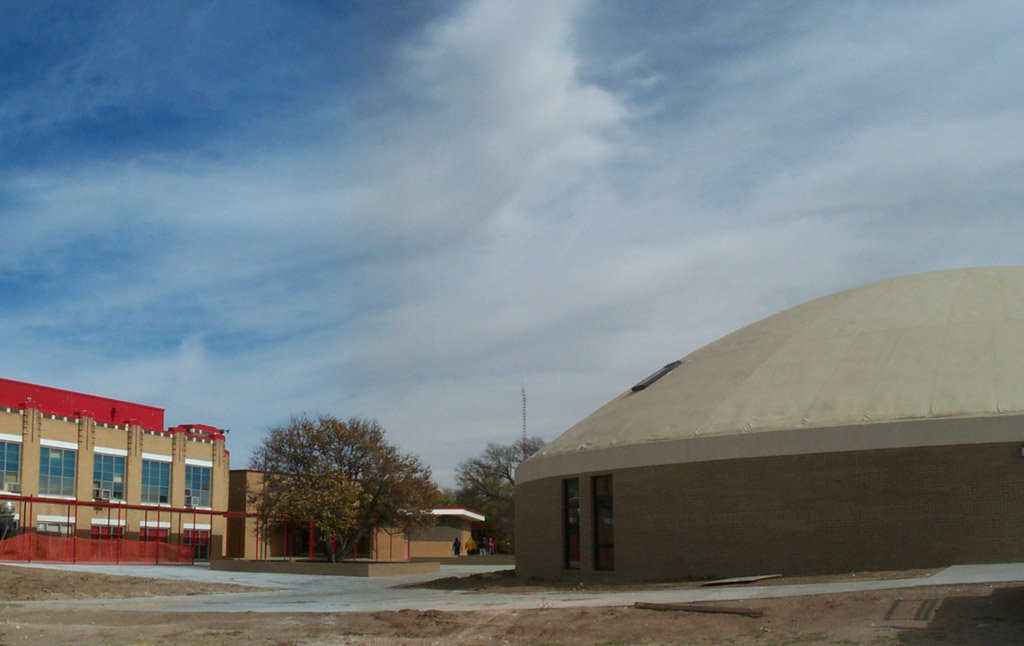A proud community
“We’re so big it takes two states to hold us!” So says the town of Texhoma, that has a population of 1300, a historical downtown with brick streets, and an area of just 0.64 square miles that straddles the state line dividing the panhandles of Texas and Oklahoma. Thus the town name, invented by combining the first three letters of Texas with the last four of Oklahoma.
Texhoma dates back to 1901 and includes the distinction of being called the “Bread Basket of the World,” before the drought, wind erosion and depression of the 1930s. Currently it’s known for its livestock, grain, gas, water, and “a number of good folks and a few old grouches!” (www.texhoma.us/history.htm)
A new achievement
Now Texhoma — particularly the Oklahoma part — has a new, pride worthy accomplishment: a beautiful Monolithic Dome facility for its 426 students, in grades five through 12.
The campus features two Monolithic Domes, 108 feet and 66 feet in diameter, connected with conventional construction. That gives the school 18,000 square feet of indoor space and 19,000 square feet of outside paving.
But it’s not just the domes Texhoma is proud of. It’s what they got for their money.
Sorely needed improvements
According to School Superintendent Rick Kibbe, Texhoma reached a point at which their existing school buildings, that dated back to 1935 and 1950, had to undergo extensive improvement or be replaced. They considered updating these old buildings until they learned that would cost an estimated $3 million or double what they could spend.
Disappointed and frustrated, in April 2000 Texhoma began soliciting proposals for a new building — one that would cost less than its voter-approved bond of $1.5 million. But administrators soon discovered that with conventional construction the best Texhoma could get was one, 700-square-foot building with four classrooms, a cafeteria and one small office — or about half of what they needed.
A look at the non-conventional
Texhoma then began considering non-conventional construction — particularly the Monolithic Dome.
About this decision, Jim Berry, School Board President, said, “When we first started talking domes, I don’t think the people were so much against that idea as they just didn’t understand it. At one time, I felt like I really had my neck stuck out there — ready to get it chopped off. Then Mr. Kibbe began explaining the cost savings and other advantages of the domes. And now we’ve got a showplace!”
Superintendent Kibbe said, “The initial factor that caught my attention was the cost per square foot. Then we began really researching and learned about the storm factor. We do not have a facility here for protection from a tornado, so that became very attractive, not only for the school, but for the community.”
Elementary School Principal Brenda Rogers, who accompanied Mr. Kibbe and three others on their inspection of Monolithic Dome schools in Arizona, said that convincing the community to go for the domes wasn’t difficult. “We had several town meetings, did slide shows, showed people the magazine (Roundup), and told them about Monolithic’s website.”
A design team headed by Architect Rick Crandall presented the school with plans for two domes and a connecting corridor. According to this original plan, the two-story, larger dome, would encompass seven classrooms arranged around a central office area on its lower floor. Its upper floor would be reserved for a future library. The smaller dome would house a cafeteria and kitchen.
More savings
That plan underwent some positive changes when Texhoma decided to use Monolithic’s Construction Management Services.
During the entire building process, the Construction Management team of Alden Porter and Keith Ireland consulted with school administrators, functioned as liaison between subcontractors and the school, researched pricing and oversaw every construction detail.
Result: a cost of $87.00 per square foot and a significant savings.
Asked how those savings were spent, Superintendent Kibbe said, “We got our library. Originally, the whole second floor of the larger dome was just going to be a slab of concrete that we planned to finish as a library at some later date. With what we saved, we got the whole library with furniture, carpeting, and acoustical ceiling with seven pewter chandeliers.”
Elementary School Principal Brenda Rogers added, “The library furnishings and lights cost $38,000. We saved enough to do that. Originally, we thought we would not be able to add anything.”
Going up!
Once construction was scheduled Mr. Kibbe said, ’We’re really excited about this project. We haven’t had any media coverage yet, but our newspaper will be out here for the ground breaking and the inflation of the Airforms. There’s lots of excitement and curiosity, and we’re really anxious for school to begin in our new domes."
Ms. Rogers said that students really got excited when they were told about the inflation of the Airforms. “We let school out early and brought the Texas kids (kindergarten through grade 4) over so they could watch too. They enjoyed it. Many took pictures.”
A cafeteria/disaster shelter
Looking at the outside of Texhoma’s cafeteria dome, its clean lines and clear colors almost seem to make it sparkle. On the inside, white walls and floor accented with red boldly proclaim the school’s colors and support its athletes — the Red Devils.
Superintendent Kibbe said that the cafeteria has officially been designated as the school and community disaster shelter. “The kids are being instructed to go to the cafeteria. And we have provided our community emergency people with a key. So if they blow the whistle at midnight, they don’t have to go looking for a school official, but can come here directly and unlock. That’s our community plan."
Principal Rogers said, “Our students are very excited about the cafeteria. The old one was small and in the basement. This new one even changed their behavior. They cooperate in keeping it clean and treat the furniture well.”
More positive reactions
Most of Texhoma’s teachers, students and parents like their new, trapezoid-shaped classrooms, each with at least one window. The classrooms have good natural and artificial lighting, acoustical tiles on the ceilings and carpeted floors.
Students asked for their opinion of the domes responded mostly with “cool,” “very cool,” “very, very cool,” or “awesome.”
Mr. Kibbe added, “We really are proud of Texhoma’s progressiveness. At the beginning of the 1900s, in 1910, we built our first brick building. More recently, at the beginning of this century, we built our first domes.”
Note: This article is a combination of several stories about the Texhoma dome-school presented on our website between 2000 and 2002. Dollar amounts quoted are based on prices during that time period.
Click here to read about how this Texoma’s dome school weathered a hail storm.
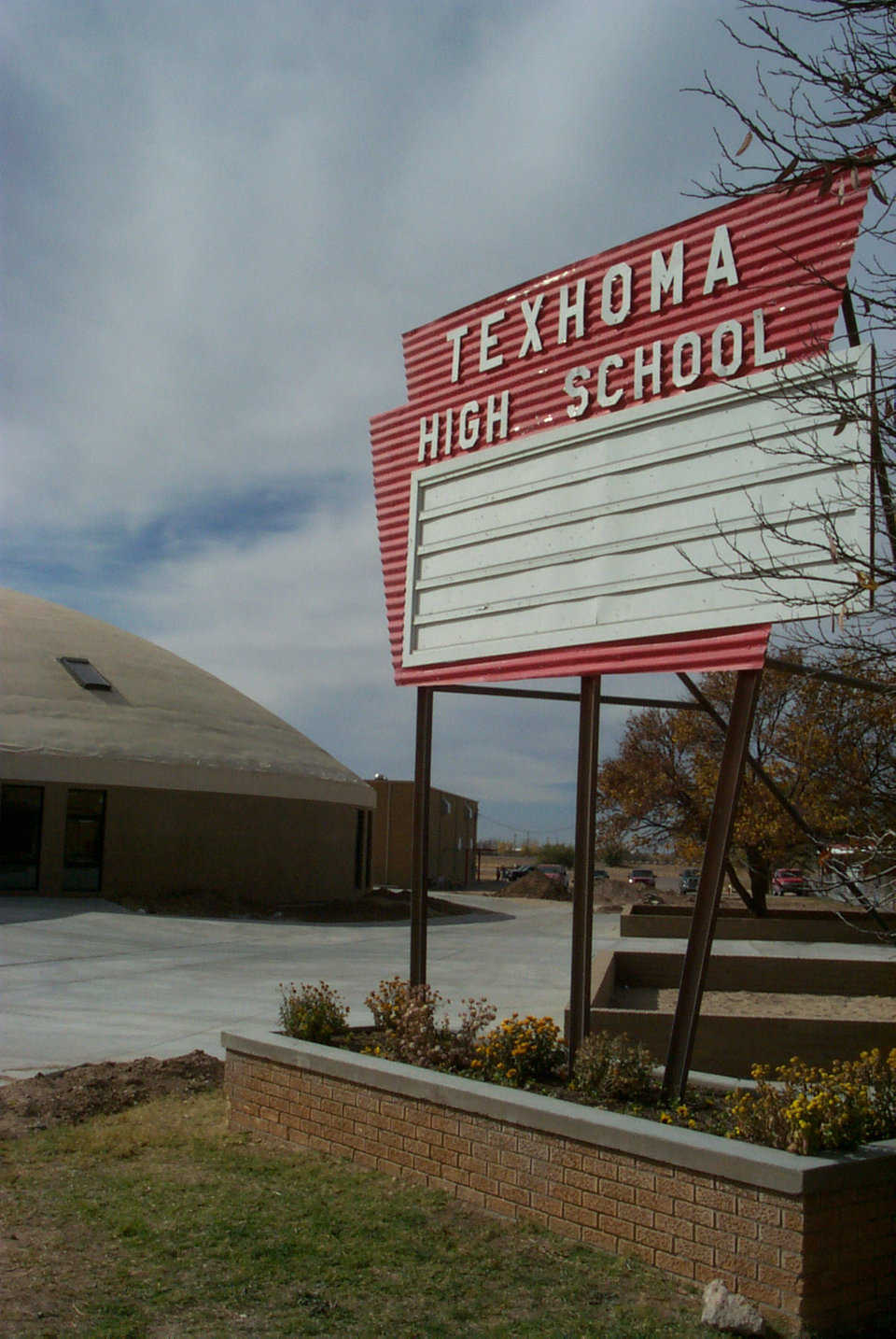
Texhoma School District — It serves approximately 500 students, in prekindergarten through grade 12, and now has a new Monolithic Dome facility for students in grades 5 through 12.
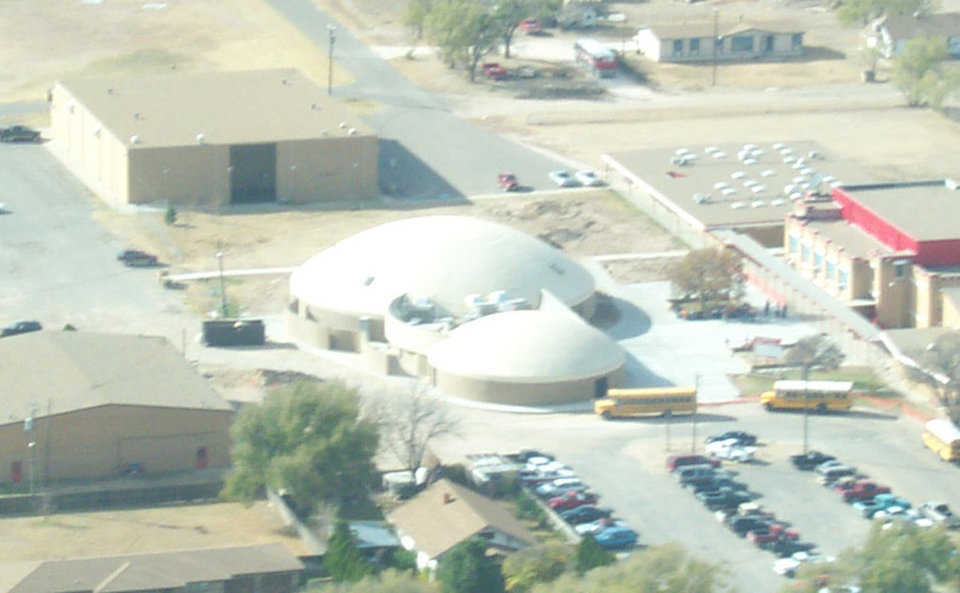
Two Monolithic Domes — Larger dome has a diameter of 108’ and the smaller has a diameter of 66’. The two domes, connected with conventional construction, provide 18,000 square feet of indoor space.
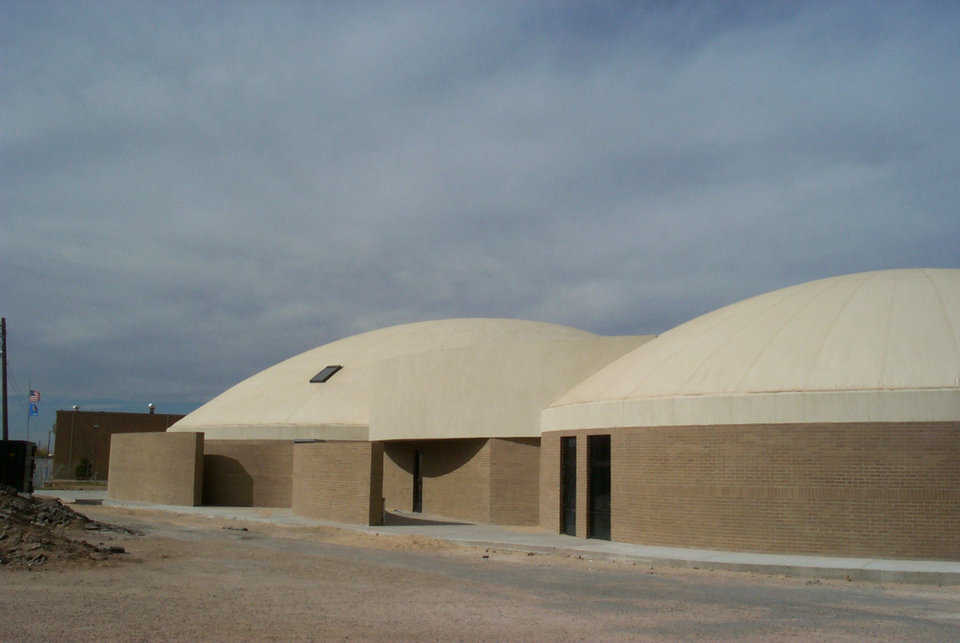
Concrete Courtyard — Plans for the outdoor area included a 19,000-square-foot concrete courtyard.
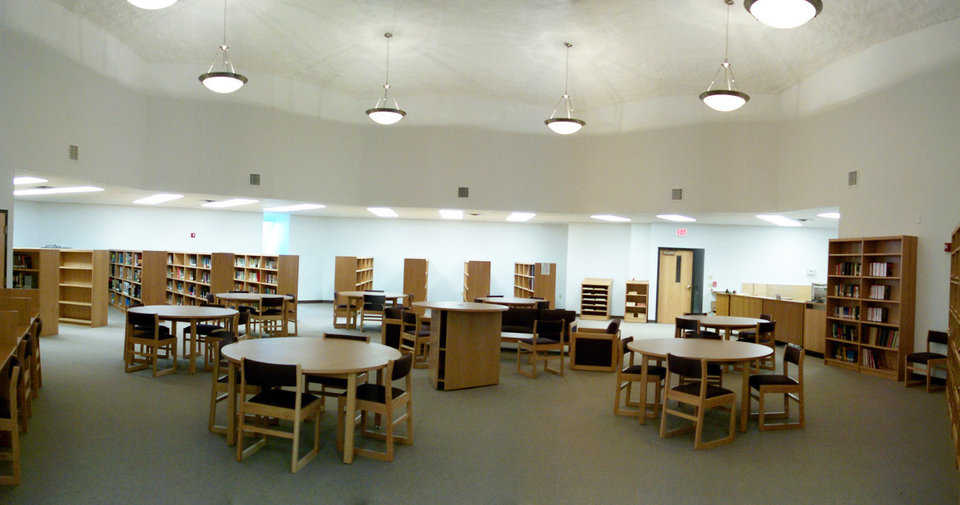
Library — Good lighting and roominess make this an ideal spot for studying and reading. Library lighting includes 7 pewter chandeliers.
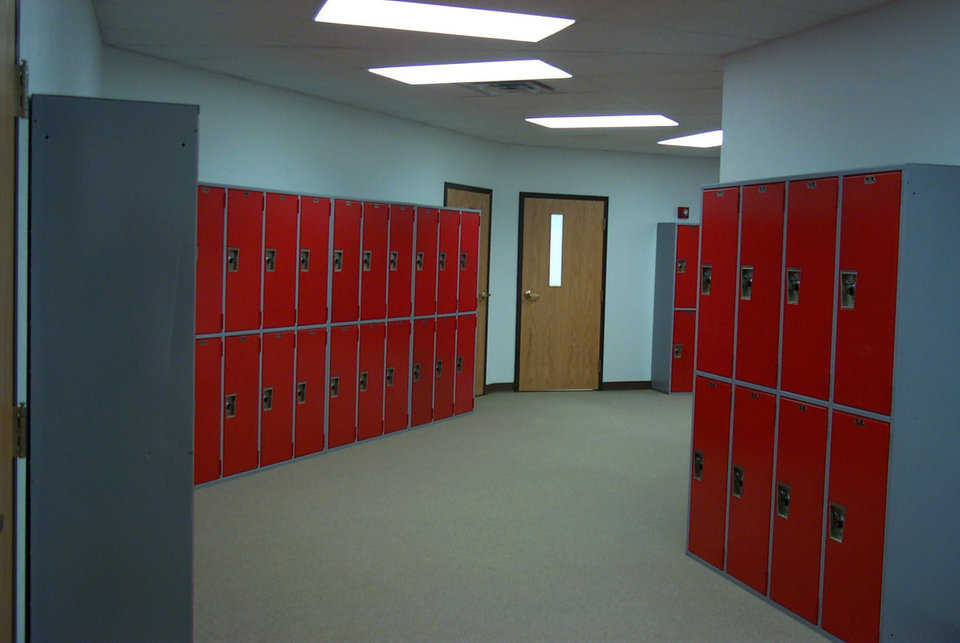
Colorful hallways — Painted with Texhoma’s school colors, these lockers line the hallways that lead directly into classrooms along the dome’s perimeter.
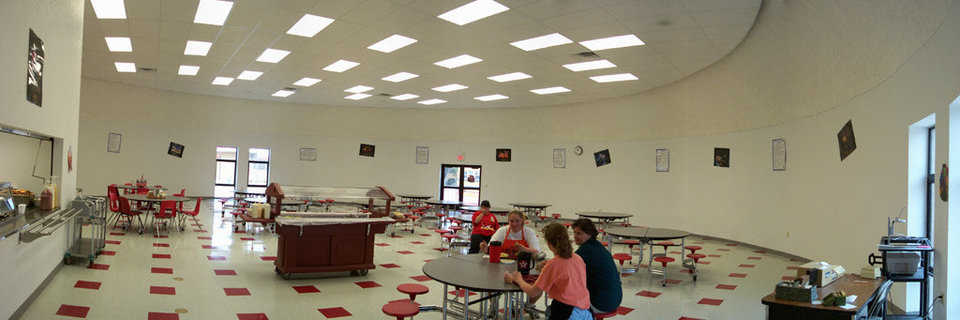
Colorful cafeteria — Overhead florescent lighting and large windows give the cafeteria a light, airy atmosphere. Student artwork adorns the walls.
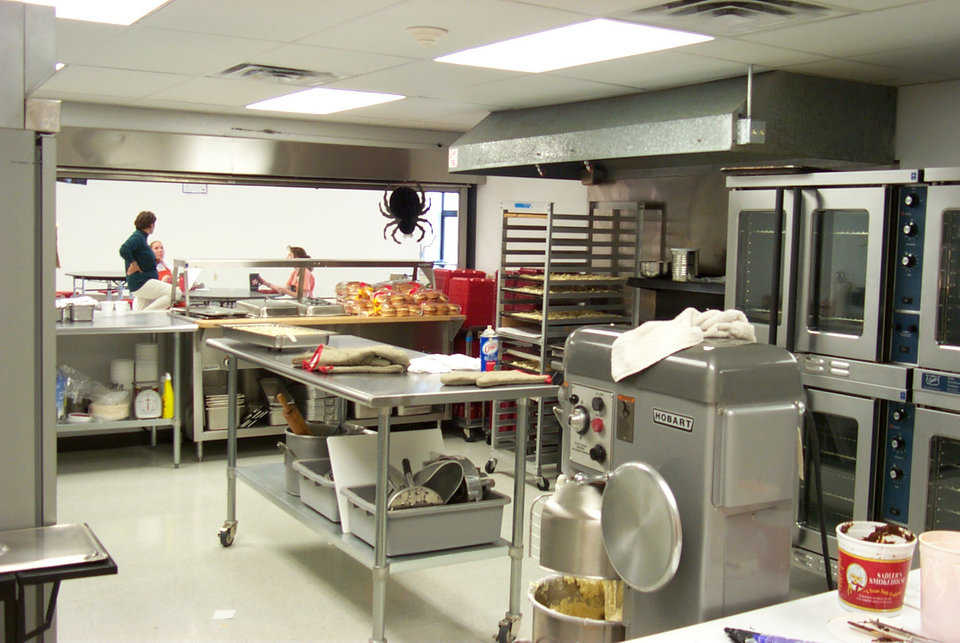
Who’s the joker? — Note the super-size, plastic beetle hanging over the food prepared in this modern, well-equipped kitchen!

Architect’s rendering — Rick Crandall of Crandall Design in Mesa, AZ designed Texhoma’s Monolithic Dome facility.
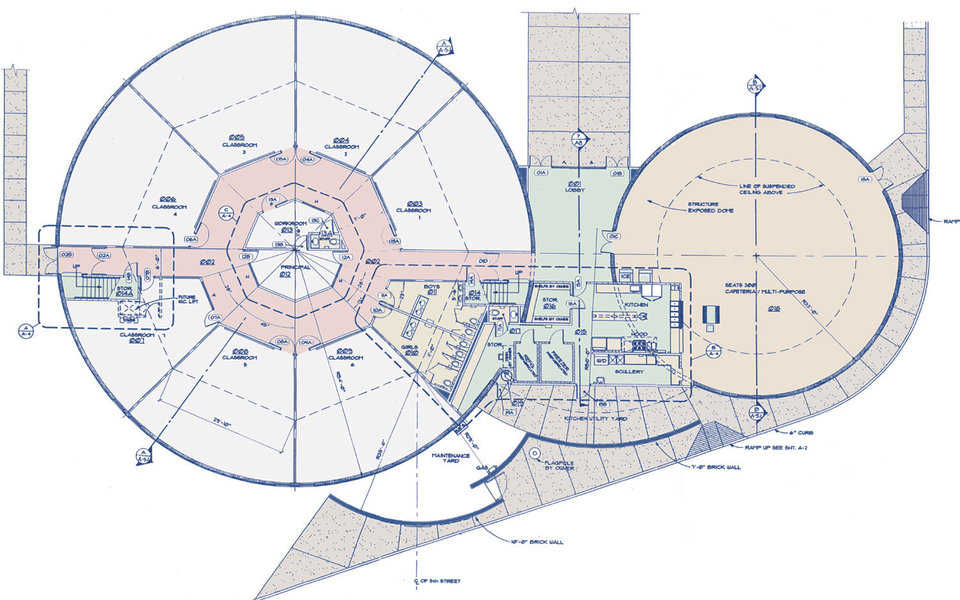
Floor plan — Larger dome encompasses 7 classrooms arranged around a central office area and a large upstairs library. Smaller dome houses a cafeteria and kitchen.
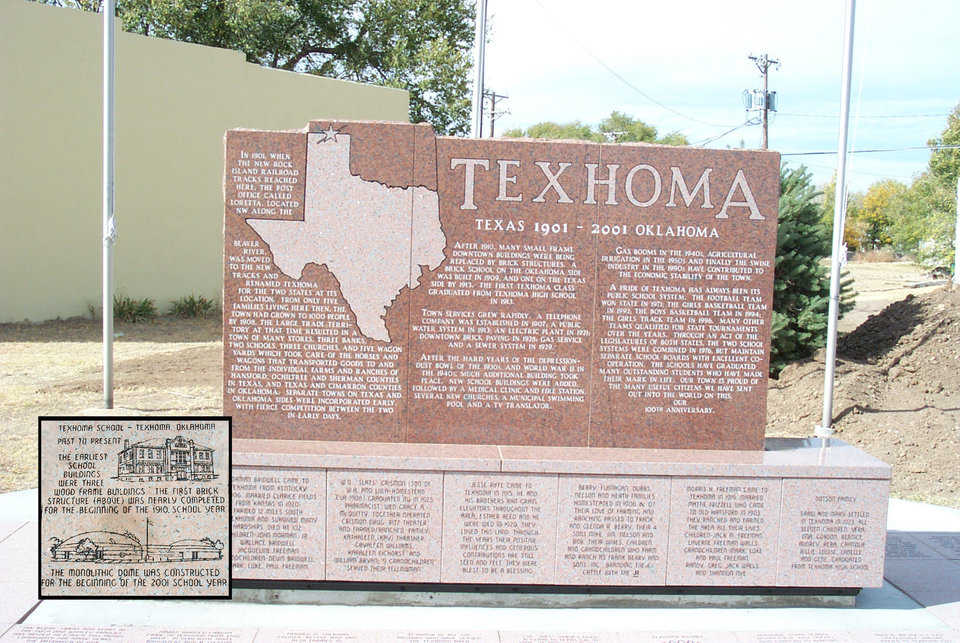
Unique location and history — “We’re so big it takes 2 states to hold us!” claims Texhoma, a town of just 1300, that straddles the state line between Texas and Oklahoma.
